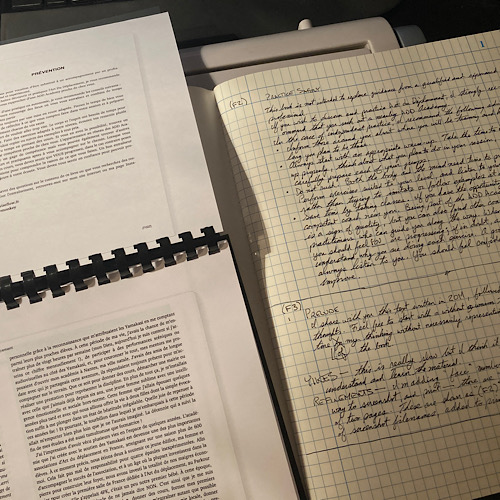I’ve been talking about writing a post about sleep for years. But as I started writing, it turned into a huge article. Which makes sense, because fixing my sleep is the single most important healthy change I have ever made.
I realized that if I wanted to get a sufficient, healthy amount of sleep — let’s say around 8 hours — I would be spending ONE THIRD of my life sleeping. That means sleeping vastly outweighs any other activity in my life. I became determined to optimize the time spent sleeping and to ARRANGE MY LIFE AROUND SLEEPING. This was the critical, first step.
Failing to plan is planning to fail
I only know how much sleep works for me. You’ll need to find out for yourself how much sleep you need. This is another spot where the habit journal will really pay off. If you can track when you go to sleep, when you wake, how much sleep you get, and your quality of sleep, then you can make changes as you review each month.
One detail I’ve discovered is that some days I simply need extra sleep. So while I have a consistent plan, some days I’m stumble-down tired a half an hour before I’d normally turn in for the night. In these cases I just go to bed a little early, and with that extra half hour I usually feel terrific the next morning. There’s no feeling to match that of walking up, fully refreshed, a few minutes before the alarm.
I started by considering the time I needed to be at work, and subtracted time working backwards (commute, breakfast, shower, etc.) to determine what time I actually needed to get up. It was basically when my alarm was already set for, but it was good to double-check by consciously figuring this out. From there I just backed up 8 hours and that told me when I needed to go to sleep.
That gave me my very first sleep hack: Get to bed at the appointed time. That would lead to sufficient sleep (sufficient is the first hurdle, quality comes next), and a reset of my life at the start of each day. But it was immediately clear that I would have to change much of my evening habit. Dinner had to be coordinated at a more consistent, earlier time, and I had to break the habit of lounging in front of the TV.
This is all VERY hard to do.
I worked to consistently use my habit journal, and to review each month. Each day that I wasn’t in bed on time, I reminded myself that SLEEP was the most important thing in my life. These days — a decade later — I do deviate from the plan. Usually it’s when I’m traveling, or intentionally out late. But the point is: I HAVE A PLAN. My sleep plan sets me up FOR SUCCESS, rather than having no plan, and sabotaging the rest of my life each day, before I even open my eyes.
Partner Buy-in
Since I share sleeping space, this was the first, serious issue I had to solve.
I found that every night we enacted the following scene: I would get sleepy, and ask her, “What time do you want to go to bed?” The response was usually, “I just need ten minutes to finish this up.” Ten minutes later, it’s role reversal: She’s ready for bed, but I’m busy with something new and it’s my turn to ask for 10 more minutes. We’d then repeat this until 1am when we’d both crash, exhausted, and get yet another terrible night of sleep.
( Sound familiar? Maybe for you it’s roommates, or guests that are around all the time. Whatever. )
Our solution was to set a bed time, and a lights-out time. Everyone goes to bed at bed time. At “lights-out” time, the ready-for-bed person, is permitted to turn off EVERY light in the house (because we sleep in darkness), leaving the other to stumble into bed IN THE DARK — no turning lights on after bed time! This means you have to learn to plan the end of your evening so you can have time for your bedtime routine.
Why bed times? Why lights out rules? Because we realize that we must go to bed on time, so we can wake up on time, having slept well.
Sleep is priority number one.
Next up
A long list of sleep hacking ideas…
ɕ
